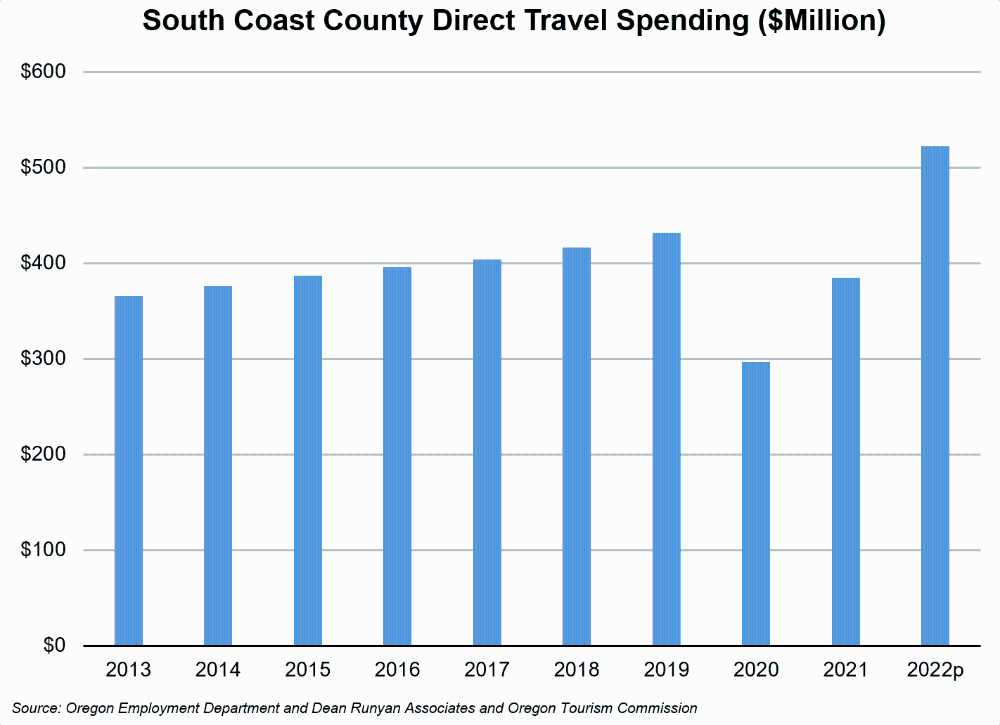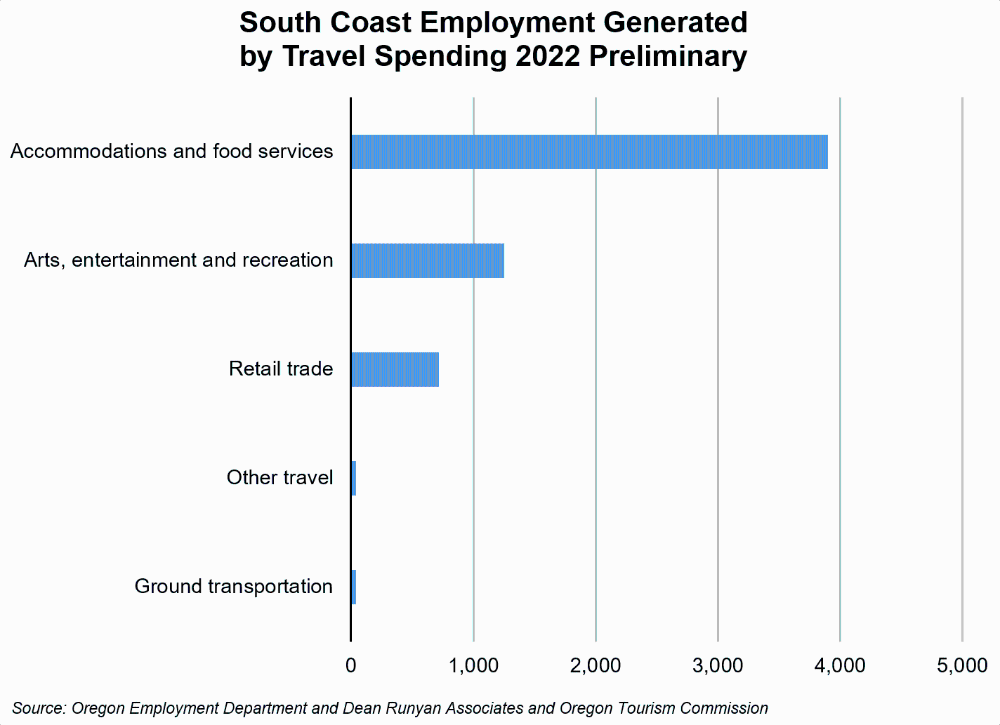South Coast Travel Impacts 2022
June 28, 2023Preliminary data for 2022 from a Dean Runyan Associates study for the Oregon Tourism Commission shows that total direct travel spending in Oregon rose 23.2% in 2022 compared with the 2021 figure. Travel spending rose from $11.0 billion in 2021 to $13.9 billion in 2022, and was $1.1 billion above the pre-pandemic 2019 level. Travel spending and earnings showed stronger recoveries than travel-related employment, which by 2022 remained an estimated 1,110 jobs below the 2019 total in Oregon.
At Oregon’s South Coast, travel spending reached a pre-pandemic peak of $423.3 million and then declined to reach a low of $296.3 million during the pandemic in 2020. The trend reversed in 2021 and the South Coast made progress recovering from the pandemic downturn, reaching $384.5 million. In 2022, travel spending increased to $522.1 million, a gain of 35.8%, at the South Coast. Direct travel spending in 2022 was $88.9 million more than the 2019 pre-pandemic total at the South Coast according to these preliminary estimates. Accommodations ($157.3 million) and food service ($129.3 million) combined to account for about one-half of travel spending at the South Coast last year. Local transportation and gas ($60.8 million); arts, entertainment and recreation ($54.7 million); retail sales ($52.9 million); and food store spending ($52.8 million) made up the majority of the rest of South Coast travel spending in 2022.

Employment attributed to travel spending was estimated at 6,000 South Coast jobs in 2022, up 12.9% from the prior year. The South Coast lost an estimated 550 travel-generated jobs during the pandemic in 2020. Two years later the South Coast had regained all of the travel-generated jobs lost during the pandemic, and was above the pre-pandemic total by 440 jobs in 2022. Industry employment generated by travel spending had a similar distribution as overall travel spending by industry. About 65% of all travel-generated employment was in the accommodations and food services industry. Approximately one out of five travel-generated jobs were in the arts, entertainment and recreation industry, and 12% were in the retail trade sector.

Tax revenue at Oregon’s South Coast, mostly from lodging taxes and income tax payments attributable to travel industry income of businesses and employees, totaled $19.8 million in 2022. Local tax revenues increased by 26.6% in 2022, rising from $2.8 million to $3.6 million over the year, while state tax revenue attributable to travel spending rose from about $13.1 million in 2021 to about $16.2 million in 2022, a 23.9% increase. There were about 4.4 million person-night overnight visitor stays at the South Coast in 2022, according to preliminary estimates.
While some don’t consider travel and tourism as an “export-oriented” industry, the Dean Runyan Associates report does a nice job of detailing why this sector does fit the criteria of an export-oriented industry, due to the influx of resources that flow into an economy from outside of the region. The travel impact report states the gross domestic product of the travel industry was $6.5 billion in 2022. Overall, the travel industry is one of the three largest export-oriented industries in rural Oregon counties, with the other two being agriculture/food processing and logging/wood products.
For the entire report see: https://industry.traveloregon.com/wp-content/uploads/2023/06/OR_2022_2023-05-24.pdf.
Interactive tables and other Oregon data from the Oregon Tourism Commission: https://industry.traveloregon.com/research/category/all-research/.